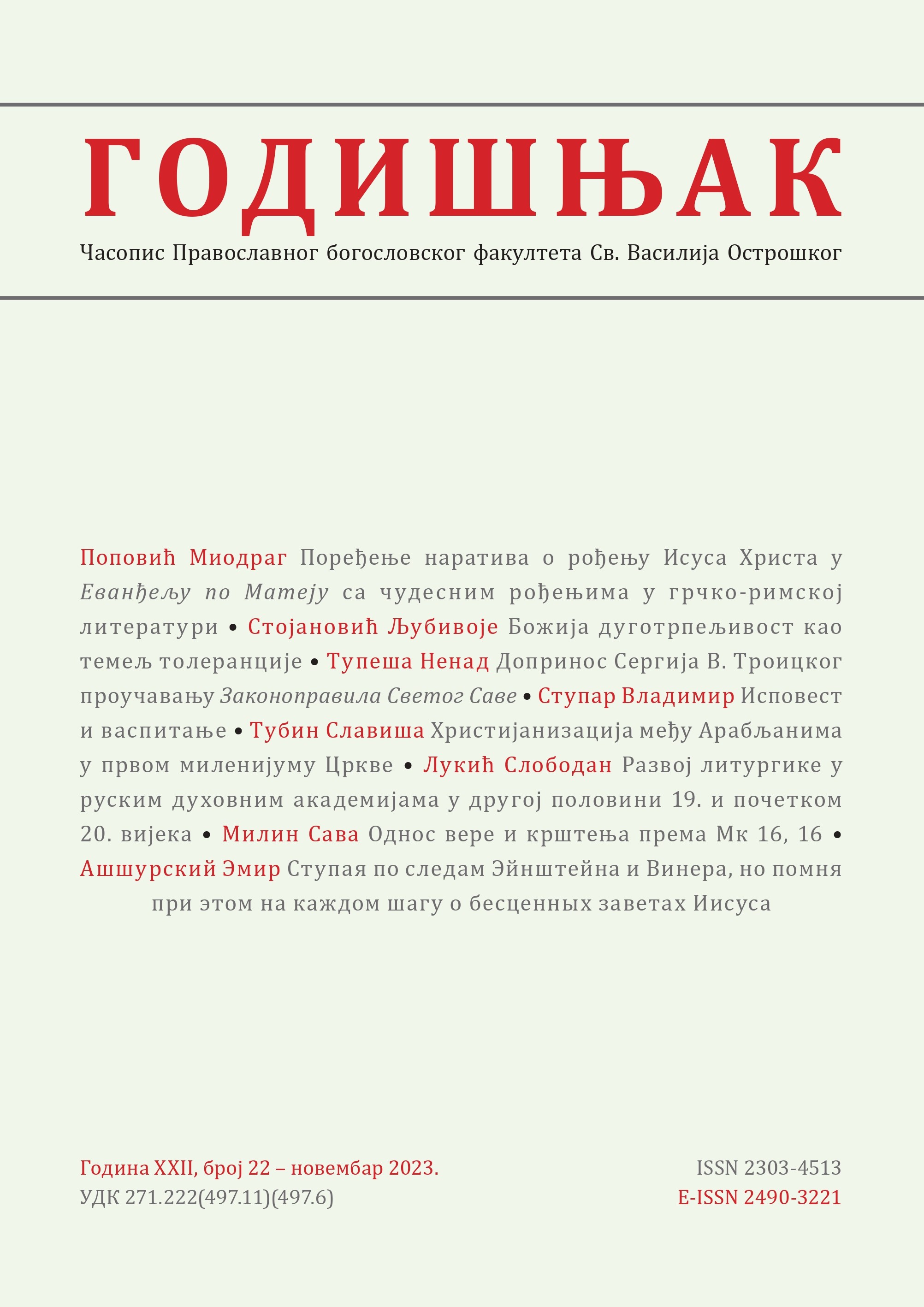Развој литургике у руским духовним академијама у другој половини 19. и почетком 20. вијека
The Development of Liturgics in Russian Theological Academies in the Second Half of the 19th and the Beginning of the 20th Century
Author(s): Slobodan LukićSubject(s): Christian Theology and Religion, Theology and Religion, Eastern Orthodoxy
Published by: Православни богословски факултет „Свети Василије Острошки“
Keywords: Liturgics; Russia; historical method; worship;
Summary/Abstract: The formation of Liturgics as an autonomous theological discipline in Russian theological academies began in the first decades of the 19th century and was completed with the establishment of a special cathedra for Liturgics and Church Archeology during the spiritual and academic reform in 1869. This was followed by the notable successes of the so-called “historical Liturgics.” The establishment of the cathedra for Liturgics is a formal result of the independence of this theological discipline, which was further confirmed during the 1880s by significant achievements and studies of this cathedra’s professors and their students, such as I. D. Mansvetov, N. F. Krasnoselcev, A. A. Dmitrievsky, A. A. Almazov, etc. Their heritage has received a significant amount of attention recently, although a complete understanding of their scientific achievements still requires much effort. The basis for studying Orthodox worship in Russia was laid at the beginning of the 19th century at the St. Petersburg Theological Academy by Saint Philaret (Drozdov). Although he approved the systematic exposition of the “scholastic” theology, Saint Philaret has applied the historical-theological method to the study of Holy Sacraments. Saint Innocent (Borisov) proposed an alternative in the 1830s at the Kazan Theological Academy, bringing the study of worship into the theological system along with the symbolics (the study of the Christian faith), canonics (canon law), and hierarchics (the study of hierarchy), thus proposing a very complex systematical-hierarchical approach to the theological studies. Nevertheless, this model produced little results. Much better was the method of St. Petersburg Theological Academy’s professor V. I. Dolocky who attempted to combine dogmatical, historical, and symbolical methods in the study of worship. In this way, Dolocky enabled a more active application of the historical method and emphasized the importance of the liturgical texts. Among the most distinguished champions of the historical method in the pre-reform generation of professors of theology was A. L. Katansky who combined his teacher’s ideas with the historical trends of the Moscow Theological Academy. The potential of this theological-liturgical approach was actualized at the beginning of the 20th century. The study of liturgical manuscripts preserved in various libraries began at the end of the 19th and the beginning of the 20th century. The researchers have published many papers on ancient manuscripts, as well as many translations of liturgical services from Ancient Greek into the Church-Slavonic language. Due to the efforts of Russian theologians from this period, liturgical theology in Russia reached its peak by 1917.
Journal: Годишњак
- Issue Year: 2023
- Issue No: 22
- Page Range: 61-73
- Page Count: 14
- Language: Serbian

